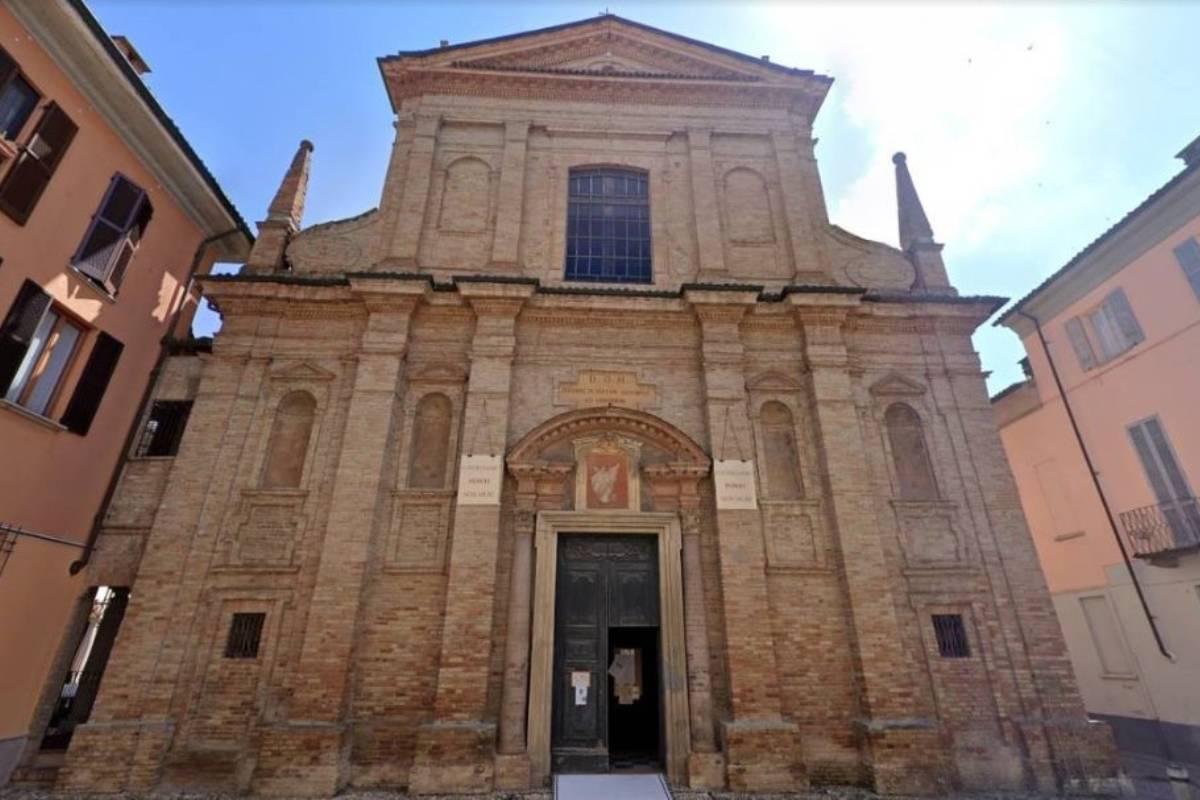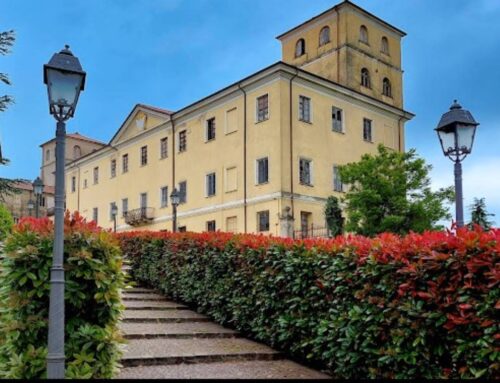The Carmine Church in Voghera (Via Giuseppe Mazzini corner of Via Galilei) is one of the city’s main places of worship and architectural treasures. Its origins date back to the 14th century, when the confraternity of the Raccomandati founded an oratory next to the town hospital. The present church is the result of a reconstruction in the 17th century, which gave the structure the Baroque appearance that we can admire today.
The Legend of the Compass Stone
A peculiar element associated with the church was the presence of a round stone with a hole in the center, located in its churchyard. According to an ancient legend, it was at this very spot that God placed the compass to create the round Earth. This myth is linked to the geographical position of Voghera, situated along the 45th parallel, exactly halfway between the North Pole and the Equator. This unique location has always sparked interest and curiosity, fueling stories and interpretations that are still passed down among the city’s inhabitants today.
Architecture and Interior of the Church
The interior architecture of the Church of Carmine is striking for its elegance and symmetry. It features a square layout with a large central dome, supported by arches resting on semi-columns. The main gilded wooden altar houses an exquisite tabernacle with a decorated ciborium, while on either side, there are two imposing marble altars:
- To the right: The altar dedicated to Our Lady of Sorrows, featuring an evocative papier-mâché representation of the Dead Christ.
- To the left: The altar of Our Lady of Mount Carmel, the focal point of Marian devotion.
The interior, embellished with Baroque frescoes and decorations, conveys an atmosphere of recollection and sacredness, offering visitors and the faithful a place of peace and prayer. The natural lighting, filtered through the stained glass windows, gives the church an evocative appearance, especially during religious celebrations.
The Lingiardi Organ and Dome Frescoes
Above the main entrance stands a precious Lingiardi organ from 1842, which, unfortunately, is in need of restoration. This musical instrument has accompanied liturgical functions for centuries and represents a historical heritage of great value.
The dome is adorned with frescoes painted in 1655 by the painter Gian Battista Cane, depicting the Assumption of the Madonna, surrounded by angels and apostles, creating an extraordinary visual effect. Cane’s works, characterised by an extraordinary mastery in the representation of movement and light, give the church an appearance of great solemnity.
Why Visit the Church of Carmine in Voghera?
The Church of Carmine in Voghera is a symbol of history, art, and faith—an unmissable landmark for those visiting the city. Thanks to its central location, artistic richness, and deep spiritual significance, it is a must-visit destination for tourists, sacred art enthusiasts, and worshippers alike.
In addition to its architectural beauty and works of art, the church periodically hosts religious and cultural events involving the local community, making it a reference point not only for believers, but also for those who wish to learn more about the city’s historical heritage. If you wish to find out more about the Church of the Carmine in Voghera, visit the town and be enchanted by its timeless beauty. A place where history, art and spirituality come together in unique harmony, capable of moving anyone who enters with an open and contemplative spirit.





